Grade 7 • Study Guide
Social Sciences: History
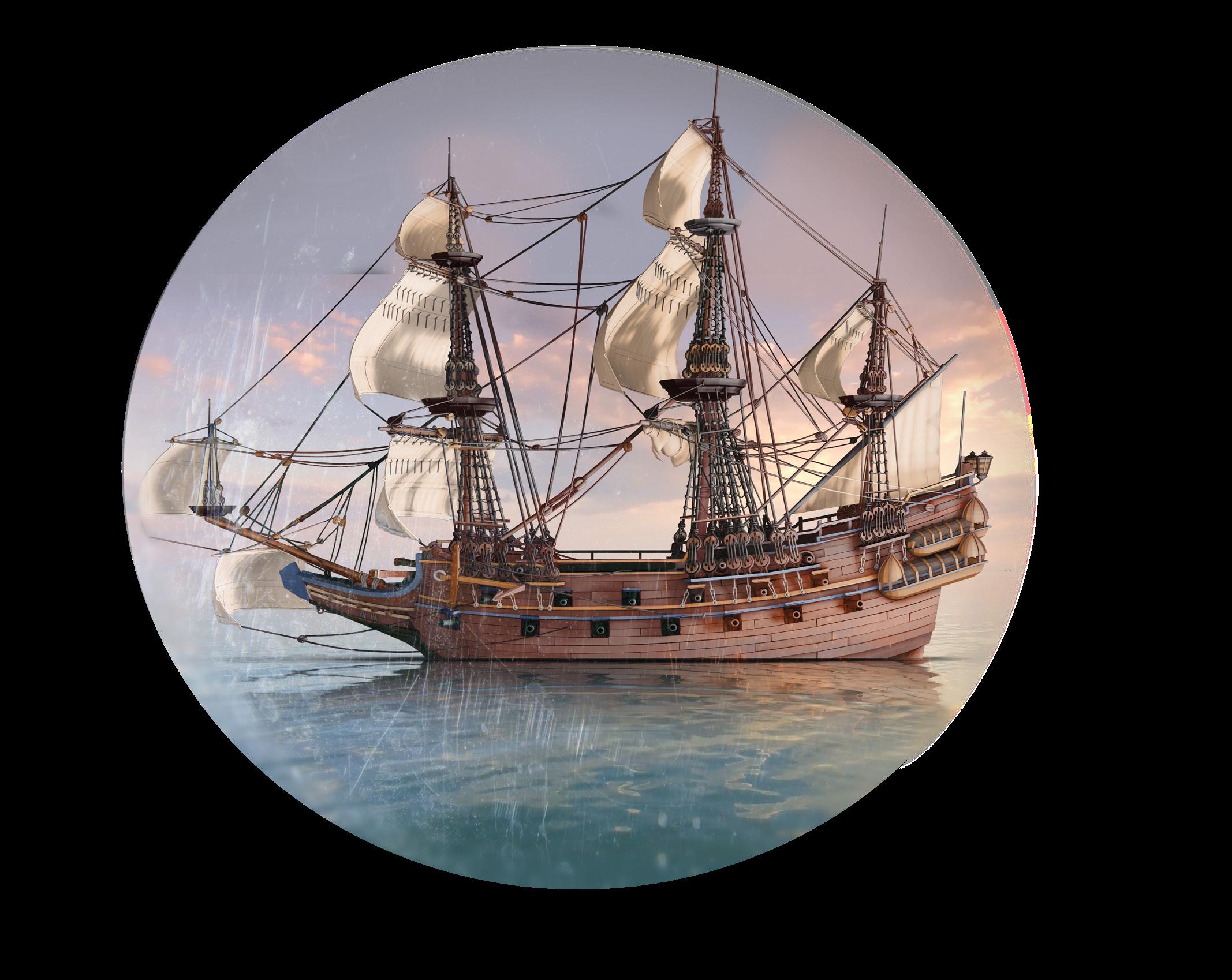
Owned and published by Optimi, a division of Optimi Central Services (Pty) Ltd.
7 Impala Avenue, Doringkloof, Centurion, 0157 info@optimi.co.za www.optimi.co.za
© Optimi
Apart from any fair dealing for the purpose of research, criticism or review as permitted in terms of the Copyright Act, no part of this publication may be reproduced, distributed, or transmitted in any form or by any means, electronic or mechanical, including photocopying, recording, or any information storage and retrieval system without prior written permission from the publisher.
The publisher has no responsibility for the persistence or accuracy of URLs for external or third-party internet websites referred to in this publication, and does not guarantee that any content on such websites is, or will remain, accurate or appropriate.
There are instances where we have been unable to trace or contact the copyright holder. If notified, the publisher will be pleased to rectify any errors or omissions at the earliest opportunity.
Reg. No.: 2011/011959/07

Social Sciences
Study guide: History
Grade 7
3.4.
4.2.
4.3.
LESSON ELEMENTS

LEARNING AIMS
What learners should know at the end of the lesson. Taken from CAPS.
IMPORTANT TERMINOLOGY
New terminology to extend understanding of the subject as part of this lesson.
DEFINE
Definitions of concepts to understand the content.
IMPORTANT
Explain misunderstandings; possible confusion regarding existing knowledge.
TIPS
Any information other than the content, to guide learners through the learning process.

FOR THE CURIOUS
Encouragement to do in-depth research about the content. Expand the activity and exercise to such an extent that learners are encouraged to explore. For gifted learners: expanded exercises. For Learners with Special Educational Needs (LSEN): explain the need to complete the basic questions to achieve a passing mark.
ACTIVITY
Questions throughout the lesson that must be done in order to test the knowledge of the lesson completed.
EXERCISE
In conclusion of the specific unit. Formative assessment.
CORE CONTENT
Emphasise the core of content; in-depth explanation of a specific section of the lesson; needs to be understood.
STUDY/REVISION

Time spent to study the content in conclusion of the unit and in preparation for the test or examination.
FOREWORD
INTRODUCTION
In History, an attempt is made to critically expose you to your own world and to expand the boundaries to the world outside of the known and the everyday contact. You are enabled to look at your own history with fresh eyes and to get into touch with new knowledge.
The focus is on in-depth knowledge and this is indicated by the amount of time allocated to a particular topic. The lessons are short, with activities.
You are encouraged to develop the following skills:
• Speculate
• Debate
• Make connections.
• Select.
• Make projections.
• Persist in tackling real issues and important questions
It is important that you always keep the following questions in mind:
• Who?
• What?
• When?
• Where?
• How?
• Why not?
• If?
• Could?
• Is/become?
SampleLanguage remains an important component of any subject, also in History. It is essential that you always spell correctly and answer questions in full sentences. Answering in full sentences enables you to formulate answers to longer questions logically and grammatically correct. It is important to keep in mind that different forms of text, such as verbal, written and visual, are central to the discipline.
Similarly, writing is a skill that we also try to develop through this subject. You must write regularly, with clear progression in length and complexity as indicated in the CAPS language documents. The language documents specify the requirement levels for the various grades. Evidence of your work, including written work, should be kept.
The activities at the end of each lesson should be completed to practise the necessary skills. At the end of each unit, an open book test is completed to provide a unit mark. An examination is also written at the end of the second and fourth units
It is important that you consult additional sources such as magazines, newspapers, the internet and maps to provide a visual perspective on the content.
YEAR PLAN
1 1 Trade across the Sahara Desert
2. The Mali Empire
3. The city of Timbuktu
4 Timbuktu as trade centre on the trans-Saharan caravan routes
5. Timbuktu as a centre of education
2 6. West Africa before the European slave trade
7 The nature of slavery in West Africa before the arrival of the Europeans
8. Slavery in the American South
9. The impact of the transatlantic slave trade on slaves
10. The impact of the transatlantic slave trade on the economies of West Africa, America and Britain
3 11. Colonisation of the Cape in the 17th and 18th centuries: Introduction
12. Revision of Grade 6
13 Dutch settlement
14 Free burghers; Dutch and French Huguenot immigration to the Cape
4 15. Arrival of the British and the expanding frontiers of the European settlements
16 The eastern frontier of the European settlements
17 The northern frontier of the European settlements
UNIT 1: The Mali Empire and the city of Timbuktu

LEARNING AIMS
Upon completion of this unit, you should be able to do the following:
Understand the importance of heritage and conservation.
Explain how and why people and events are publicly remembered in a community, town or city, province and the country.
Investigate how people and events in the past are commemorated in ceremonies, celebrations, museums and monuments.
INTRODUCTION
In this unit, we will look at African empires, trade and the impact these had on South Africa. In Grade 6, you learnt about the empires in southern Africa, namely Mapungubwe and Great Zimbabwe in Unit 1.
Mapungubwe, the first known empire in southern Africa, originated in the Limpopo Valley. This civilisation reached its peak between 1220 and 1300, after which it went into a steady decline. The importance of Mapungubwe is that it was the first settlement that showed a clear class difference between the rulers and the workers. Mapungubwe was also an important trade centre in southern Africa. Trade in gold, ivory, tortoise shells, iron, cattle and slaves in exchange for glass beads, porcelain and fabric from the East helped to build this empire. The indigenous inhabitants of Mapungubwe probably traded with India and China through the Muslim traders who controlled the trade along the east coast of Africa as far as Sofala (near the modern-day Beira, Mozambique)
Sample
From 1270 another empire started coming to the fore, namely Great Zimbabwe, which would eventually replace Mapungubwe. Great Zimbabwe gradually became the centre of trade in southern Africa and this contributed to the fall of Mapungubwe It is very likely that Great Zimbabwe was in direct contact with the trade cities on the east coast of Africa. Just as in Mapungubwe, gold played an important role in trade and growth of this town. As the Portuguese took over control of the Swahili city states along the east coast of Africa from the Muslim traders, the city states and trade with the interior started to decline. This also affected Great Zimbabwe.
In addition to the southern states of Africa, other empires in West Africa were also directly affected by trade
Trade in West Africa was driven mostly by gold and salt. Gold was an important metal for the West and the Arab nations and was mined in West Africa. The gold was exchanged for salt, which was a scarce and valuable commodity in West Africa. The slave trade also played a big role and slaves were used in early Europe and Asia through the centuries.
From about 700 to 1500 AD (CE) a number of powerful empires developed in West Africa. Three of these empires were Ghana, Mali and Songhai They were powerful because they controlled the trade in gold and salt across the Sahara Desert.

As was the case with trade along the east coast of Africa, the Arabs also played an important role in West Africa. They traded across the Sahara Desert and also spread Islam here. This can be seen especially in the architecture and the government style in the region
Trade occurred across land, as the rivers had too many waterfalls and the coastline was very rocky.
Baseline assessment:
Answer the following questions in detail (in full sentences):
1. Name one commodity that was traded along both the east coast of Africa and in West Africa.
2. What religion was spread by the Arabs? Through what is this evident?
3. Compile a timeline on which the dates and the origin of the discussed empires in Southern and West Africa are shown.
4. Why, do you think, was gold such an important metal for trade? (Do research if necessary.)
IMPORTANT TERMINOLOGY
A group of camels is called a caravan
Cowry shells were used as money
Commodity means item.
BC is before the birth of Christ.
BCE means Before Current Era and is a more modern term used in history to refer to the period before Christ
AD is after the birth of Christ (Anno Domini).
CE or Current Era is the more modern term used in history to refer to the period after the birth of Christ.
The learning material in the first unit in History is mainly about the African empires that maintained a high standard of civilisation before, during and after the Middle Ages.
The content of this unit is quite comprehensive and therefore, it is impossible to cover everything in the study material. Thus, it is of the utmost importance that you read wider than only the information that is provided here.
You should read in particular about the empires of Ghana, Songhai, Morocco and the French rule over the Mali Empire, which is discussed here in more detail. This prior knowledge is especially important to gain a better understanding of the relationships that the government forged with, in particular, Nigeria.
Also take note of the impoverishment of the African states as a result of colonisation and the deterioration of literacy as a direct result of this.
1.1.
1.1.1
Camel caravans as the means of transport
DEFINE
A camel caravan is a group of camels that walk behind one another and transport people or goods
Middle man is when trade does not take place directly, but by means of an intermediary.
Nomads are groups of people who move around in search of food and water, and can therefore not stay in one place.
Throughout the centuries, camel caravans transported people and goods through the Sahara Desert. The camels’ ability to survive in the tough desert conditions made them suitable for communication and trade in the regions from North Africa to Asia. Routes with sufficient food and water were chosen to ensure the survival of the people and animals

The journeys through the desert were challenging, dangerous and slow. It was challenging because the danger existed that travellers could get lost or die of hunger or thirst. In addition, the travellers were often attacked by robbers, which made these travels even more dangerous. The use of camels made trade through the desert possible and established connection routes between the various trade centres.
According to Ibn Battuta, the caravans could consist of as many as 1 000 to 12 000 camels Highly paid Berbers led the caravans through the barren desert and provided protection against attacks by other nomads
Camels have the ability to withstand changes in body temperature and do not sweat a lot. A camel’s skin is also specifically adapted to protect the animal against the conditions of extreme heat in the desert. The camel’s mouth, eyes, legs and feet have been adapted to aid movement across the desert sand, retain every drop of moisture and protect his eyes against the sand
1.1.2 Trading goods
CORE CONTENT
The trading method
The trading products
Transport of goods
Influence of Islam
Various trading goods were brought from Arabia and North Africa to Mali. The main goods were salt and gold. The Mediterranean countries experienced a shortage of gold and Mali had a shortage of salt
The West African countries in particular needed slaves as soldiers and had been trading in slaves since the 10th century. Mali traded mainly in gold and salt. As a result of the Mali Empire, the cities at the Niger Bend prospered and became wealthy and powerful. These cities included Gao, Djenné and Timbuktu.
Muslim traders sent goods such as textiles, silk, ceramics, beads, ornamental weapons and commodities by camel caravans from North Africa to West Africa. In cities such as Timbuktu and Gao, the articles were exchanged for gold, ivory, ebony wood, cola nuts (it contains caffeine) and slaves. From there, the trade goods were distributed further into Europe. Ivory from Africa was in great demand, since it is softer to carve than the ivory from India Initially, slaves were in demand, especially from the Arabs and Berbers, to be used as servants, soldiers and farm labourers.
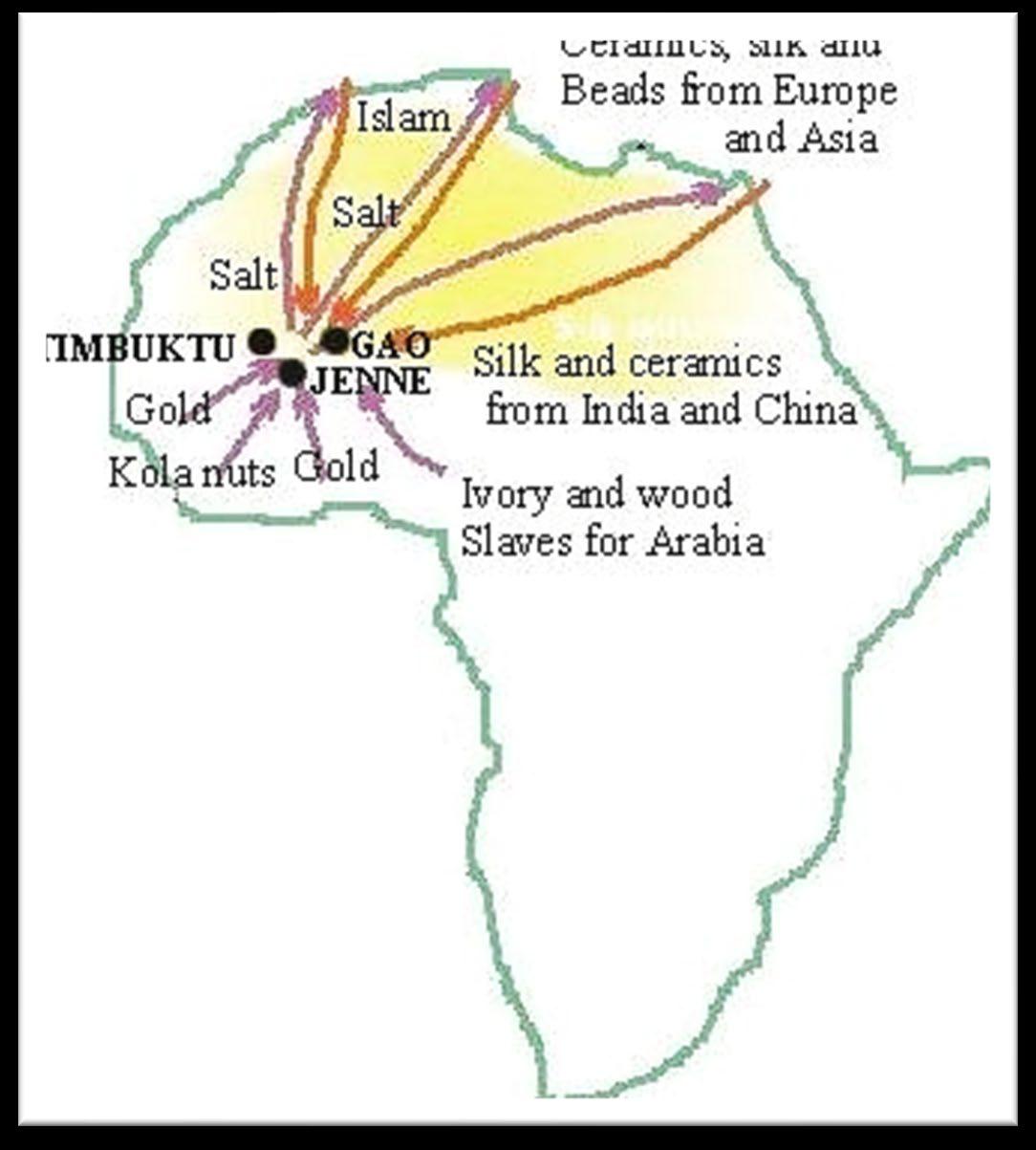
The nomads in the desert exchanged their services as guides, as well as meat and salt for fabric, gold, slaves and grain
During Portugal’s journeys of exploration, feitorias (Portuguese for trading post) were established along Africa’s west and east coast, all the way up to Southeast Asia. The feitorias were fortified citadels (fortresses), built to monopolise and centralise the local trade. These forts also served as markets, storage spaces and customs offices.
The first feitorias were established by Prince Henry the Navigator in 1445 on the island of Arguin near Mauritania The idea was to attract Muslim traders and to monopolise the trade along the North African routes
Portugal was particularly interested in the gold that came from Guinea. The rich Europeans were a bigger attraction for West African traders, which caused North Africa to suffer politically and economically

1.1.3 The spread of Islam across North and West Africa

FOR THE CURIOUS
Make a poster in which six reasons are illustrated why camels are so suitable as a means of transport in the Sahara Desert
Pay special attention to:
i. Water.
ii. Food
iii. Adaptability to move across sand
iv. Sand storms
v. Transport of goods.
vi. Adaptation to extreme temperatures.
SampleAs a result of trade, the Berbers came into contact with Islam. Mali was a Muslim empire and trade made the spread of Islam possible. The Arab and African historians referred to the empires of West Africa in their writings and specifically to the various trade routes as well as economically successful empires such as Ghana. The translators and treasurers in Ghana were Muslims. The Muslim ministers were welleducated and could record all occurrences in Arabic. They could also correspond with other rulers on behalf of the king. Muslims in an empire’s government obviously also formed part of the bigger political system of Islam and consequently, they could promote international relations. This enabled the Muslims to obtain more political power and they became increasingly influential.
As the trade centres on the trade routes became better known, Islam spread and these cities were acknowledged as centres of learning in civilisation. New ideas developed as a result of the contact between the various traders of the different countries and regions
In Mali, Islam has been present since the 13th century during the rule of the Sundiata Keita, the founder of the empire. The most influential Muslim ruler was, however, Mansa Musa, and he is generally regarded as the architect of the empire

The spread of Islam was peaceful. As a result, international relations were established and promoted, opportunities for learning were presented and it also had a positive impact on architecture and government systems. The local inhabitants benefitted greatly from Islam. Islam was also much more tolerant than Christianity towards the local people’s religions. In addition to the written religion that was then practised, the Arab geographical knowledge of the world was the most advanced at that stage, and local inhabitants had access to universities
ACTIVITY 1
1. What kind of animal is exceptionally well-suited to the trade routes in the Sahara Desert? (1)
2. Explain why the journeys through the desert were so dangerous. (6)
3. Name the commodity that was scarce in Mali? (1)
4. Name any three trade articles that were brought to West Africa from North Africa. (3)
5. What were feitorias and what purpose did they serve (name 5)?. (6)
6. What advantages did Islam have for the West Africans? (3) [20]
1.2. Lesson 2: The Mali Empire
1.2.1 Mali at the height of its power under Mansa Musa early 13th century
DEFINE:
Mansa means king or emperor.
Vassal states: Subordinate states or provinces; in other words, which were not governed independently and were subjects of the king.
Mali was one of the provinces of the Ghana Empire. By 1300, the Ghana Empire collapsed and the Mali Empire was established in its place under Emperor Sundiata Keita. He was young and smart, and immediately reinstated trade relations with its neighbouring countries. He expanded the Mali Empire by gaining control of the gold and salt mines.
The most famous emperor (Mansa) during the Mali Empire was Musa I (1307 to 1332). Like his predecessors, he expanded the empire even further and added, among others, the cities of Walata, Timbuktu and Gao. Mali was a bigger empire than any in Europe. Mansa Musa was a devout Muslim who had a love of knowledge and poetry
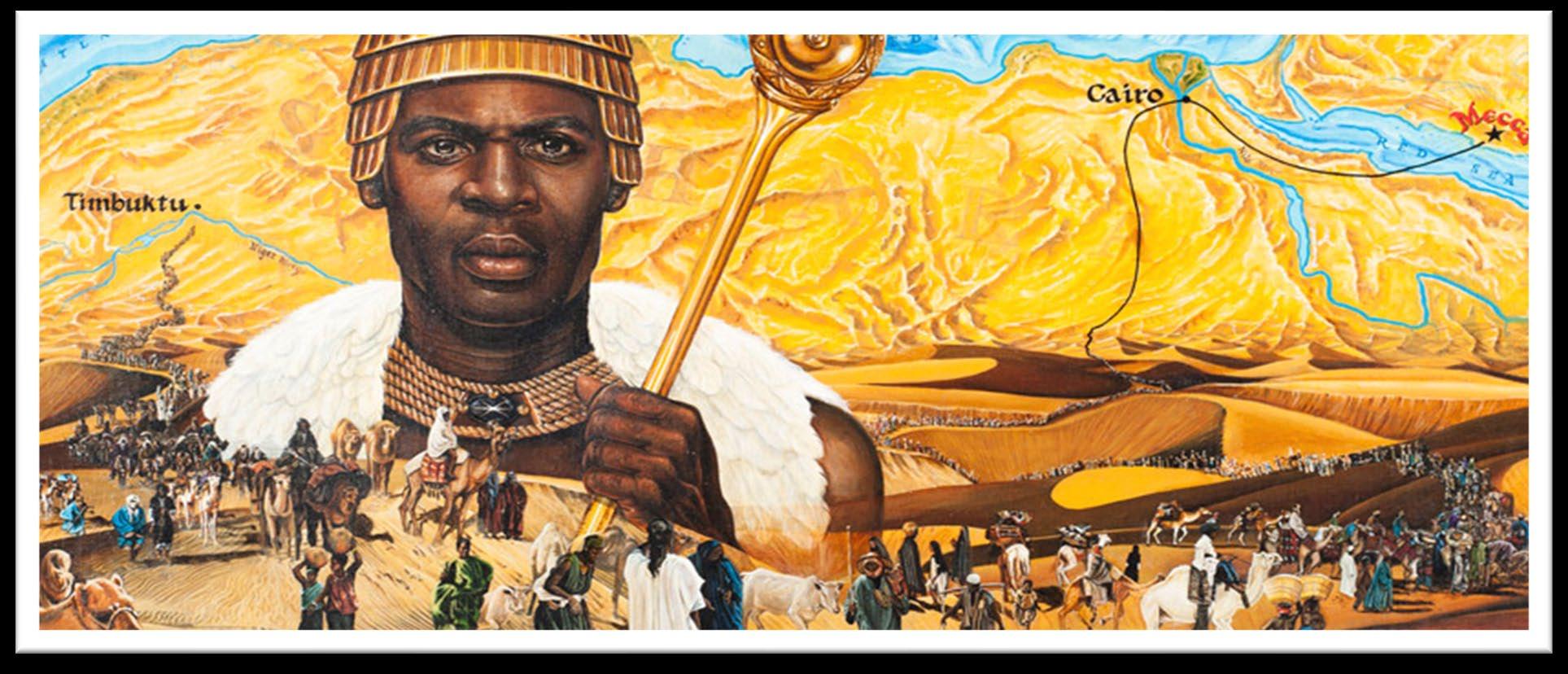
Mansa Musa divided the empire into provinces, each with its own governor. Each province had a number of towns under its control, each with its own mayor. The mayors and governors were responsible for the management of the individual towns or provinces and had to handle smaller matters internally. This enabled Mansa Musa and his advisors to focus their attention on the bigger empire as a whole.
Under his rule, the Mali Empire became very wealthy and the trade increased threefold. Until gold was discovered in the Americas, Mali was the main supplier of gold to the known world at the time. Mansa Musa was a convert to Islam and built exquisite mosques. Legend has it that, while on his pilgrimage to Mecca, he handed out so much gold to the poor that the gold price in Egypt fell.
He also established important centres for education in politics, philosophy, astronomy, mathematics and science; and under his leadership, the language, culture and judicial system spread along the Niger River
The Mali Empire consisted of a number of vassal states that formed the greater empire, and maintained its own unique level of civilisation. Citizens were free to trade and travel as they wished and the state functioned peacefully. Consequently, the citizens were very happy. According to Ibn Battuta, women enjoyed their freedom and were not veiled as is the Muslim custom, even though they followed Islam
The inhabitants of Mali were very creative and intelligent. They worked very hard and there was no poverty among them. Mansa Musa shared his riches and handed out luxury items to them.
CORE CONTENT
Pilgrimage to Mecca.
Visits other states and countries
Builds trade relations
Displays Mali’s wealth
North Africa and Europe take note of Mali
Introduced to other cultures.
Mansa Musa was also known for his world-famous pilgrimage to Mecca. The pilgrimage started in 1324 and ended in 1326 Legend has it that his personal guard consisted of 500 men and the journey was 3 000 miles long (almost 5 000 km). This large group elicited reactions of disbelief as far as they travelled. The journey was made on camels. Before this pilgrimage, Mansa Musa had never been beyond the country’s borders. Once he had established his rule and his country was enjoying prosperity and good governance, he decided that it was time for his pilgrimage to
Mecca, a journey that every devout Muslim is expected to undertake at least once during his lifetime
It was mainly the way in which Mansa Musa spent money, especially gold, that impressed people. Apparently, he handed out so much gold as donations and alms, and bought so many products with gold that the value of gold dropped for the next 12 years in the Near East and Egypt. Mansa Musa was surprised at the high prices of the products. He realised that the traders increased their prices because they saw that he did not mind spending money

He spent so much money that he had to borrow money to fund his return to Mali. Upon his return, he generously repaid the loans.
No one tried to invade or take over Mali in his absence. As a preventative measure, he took some of the most influential people in the country with him and left behind a very strong army to guard the empire.
SampleThe pilgrimage had far-reaching consequences. Many scholars came to Mali and both the Europeans and the Muslims worldwide took note of Mali.
1.2.3 The Great Mosque

FOR THE CURIOUS
Draw a map showing the route that Mansa Musa followed to and from Mecca; also indicate the names of the countries and cities on the map
Write a paragraph in which you address the following:
i. How many people accompanied him.
ii. How many camels he had in his caravan.
iii. How much gold he took with him
iv. Why he went to Mecca.
v. Paste a picture of Mansa Musa and Mecca next to your map.
Upon his return from Mecca, Mansa Musa embarked on big building projects. He built mosques and universities in Timbuktu and Gao. The best known was the University of Timbuktu, which was built in 1327 The university was built by Abu Es Haq es Saheli of Granada, and paid for with 200 kg in gold. It is still standing today and is renovated every year after the rainy season.
Most of the buildings consist of soil, straw, grass and wood, except for the minaret (tower) and the northern façade, which was built from sand-lime blocks
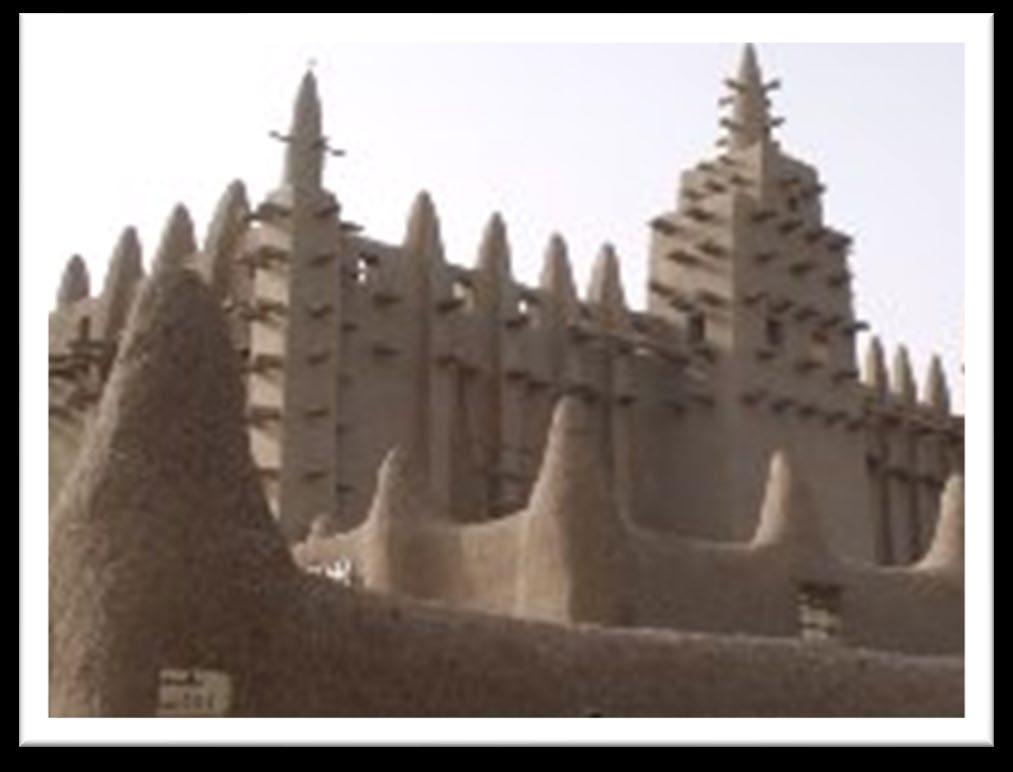
Sample

The Sankoré and Sidi Yahya madrasahs (university) were another two impressive buildings. In Arabic, Madrasah refers to an educational institution, e.g. a university or school. Both universities are also mosques. The Sankoré University had to be built around the mosque by order of Mansa Musa Abu Es Haq es Saheli was also appointed to do the conversions. Just like the Djinguereber Mosque, this building still exists today. The Sidi Yahya University and Mosque was completed in 1440, but not on the instruction of Mansa Musa.
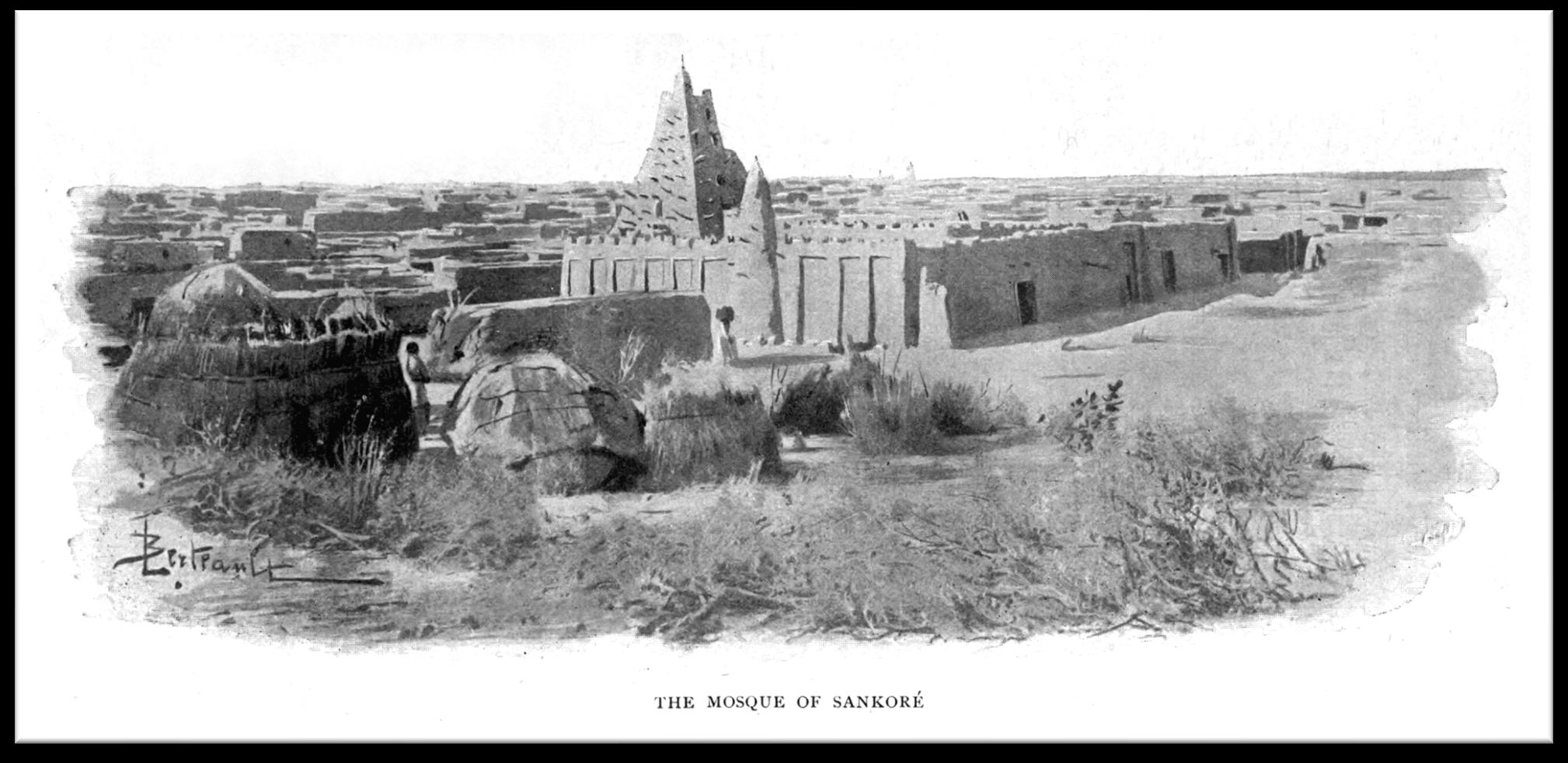
ACTIVITY 2
1. Was Mali a big empire right from the start? How do you know this? (2)
2. What does Mansa mean? (1)
3. Who was the well-known ruler of Mali? (1)
4. From when until when was he the ruler? (1)
5. Why, do you think, was he such a good and successful ruler? (2)
6. What is the difference between a mosque and a madrasah? (2)
7. Name two well-known buildings that Mansa Musa commissioned. (2)
8. Compile a timeline that shows Mansa Musa’s birth, death, rule, pilgrimage (departure and return) and building projects (two most important buildings) (7)
9. What were mainly used to build the buildings? (2) [20] Sample
